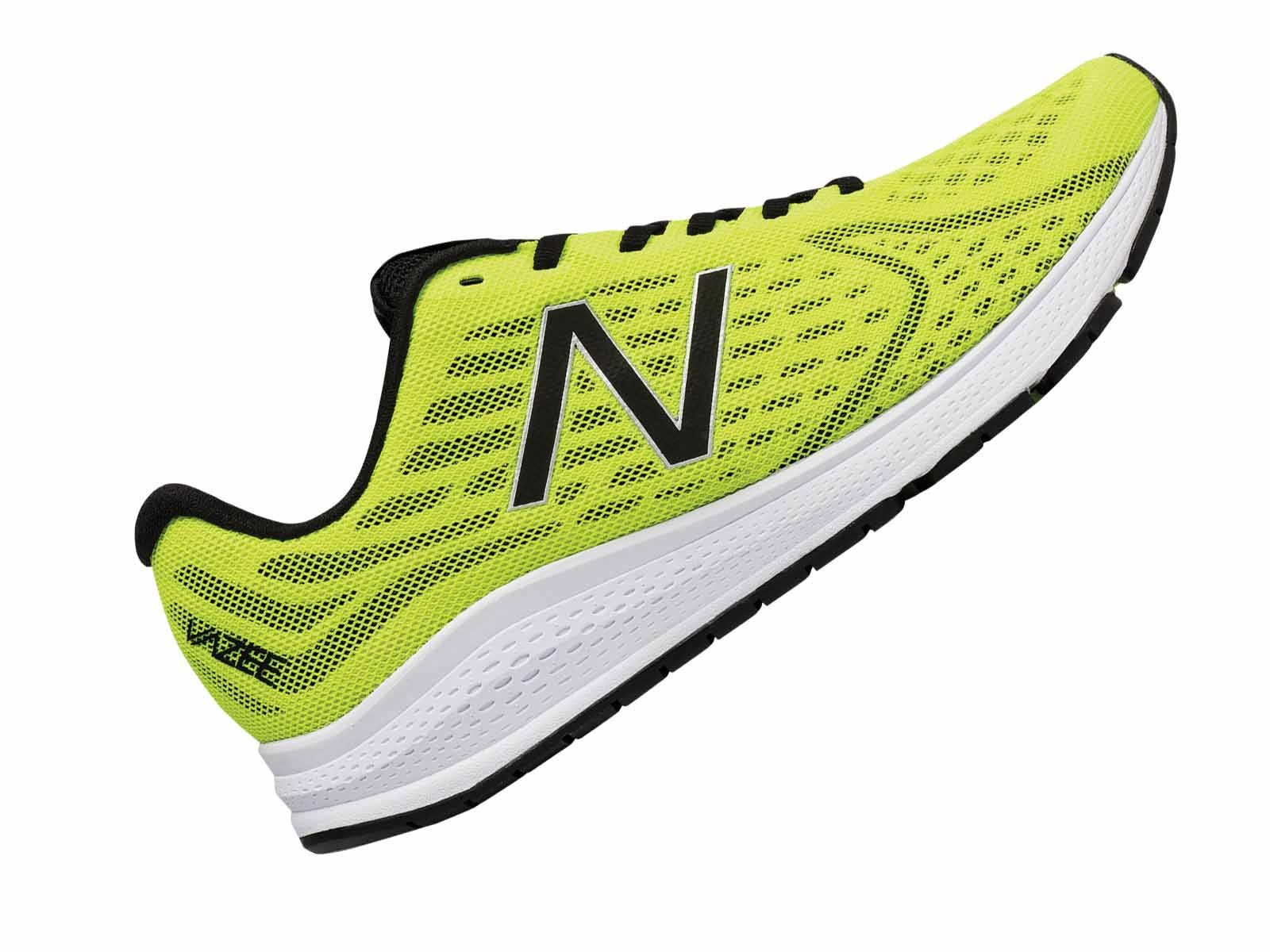The Rise Of Energy-Boosting Footwear

New Balance Vazee Rush v2 - $90, Newbalance.com
A look at the recent rise of energy-boosting footwear.
Every athlete wants to run faster and jump higher. What if a shoe could help you do that? The new crop of running footwear doesn’t exactly go that far in promising performance enhancements, but recent advancement in midsole design signal a major leap forward. This progress is thanks to new compounds that have the potential to boost and return more energy with every foot strike.
The Forerunner
In 2013 Adidas unveiled its new Boost midsole technology, which employed tiny bubbles or capsules of TPU (thermoplastic polyurethane), rather than the traditional EVA (ethylene vinyl acetate). It was hailed as a major breakthrough in midsole technology and, to be sure, it immediately made old-school EVA shoe models feel flat in comparison. True to the brand’s claims, runners could feel the improved energy return when running atop this newfangled midsole.
It was only a matter of time before other brands followed suit. Saucony’s Everun technology, which debuted in late 2015, garnered significant attention. Everun’s cushioning is said to help you “run stronger, longer” thanks to a patent-pending construction which positions the foam closer to the foot to better distribute pressure. The brand also says that a unique heel insert helps to maintain the integrity of the cushioning in the landing zone, thereby returning 83 percent of the energy that is absorbed.
Spencer White, the head of the Saucony Human Performance and Innovation Lab, says the more energy efficient a cushioning material is, the less it heats up with every step. “Since a greater percentage of the energy absorbed by the material is ‘returned,’ less energy is left behind in the foam as heat,” he says. “Because a higher energy return material heats up less, it maintains its cushioning characteristics better, providing consistent cushioning throughout the run.”
Ready For Launch
New Balance is touting its new Rapid Rebound cushioning in forthcoming models like the Vazee Rush v2, to be released in July. Although Skechers forged its own path with Resalyte foam over EVA, the brand is also set to revamp its midsoles with its new 5Gen material. And Brooks is taking a slightly different approach with a new model called the Neuro, which employs “propulsion pods” for improved energy return. Firmer foam makes up the outer ring of these pods, with softer foam in the center, which are built to offer a smoother forward propulsion and balanced ride.
These new midsole technologies and designs signal the start of an exciting time in the running shoe industry. With some of the biggest developments the industry has seen in decades, the year 2016 is surely only the beginning.